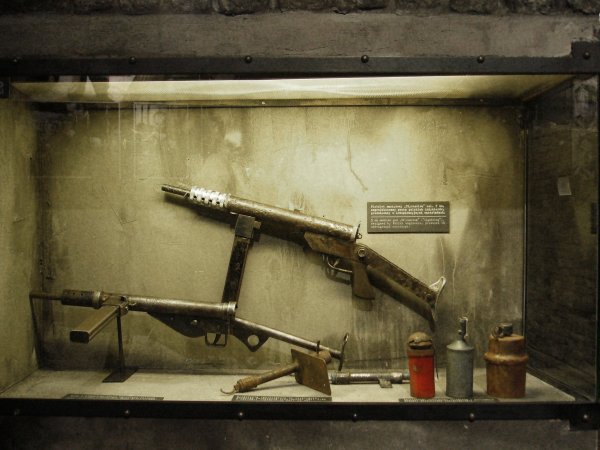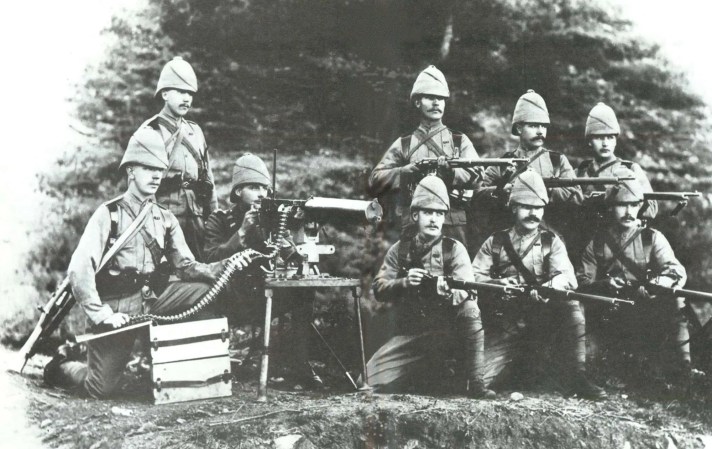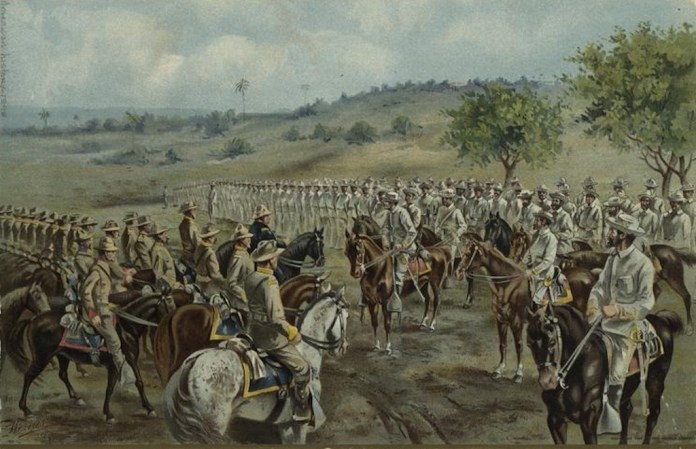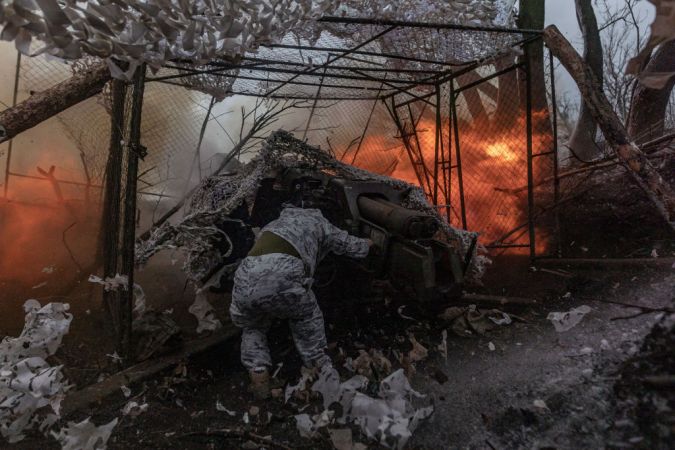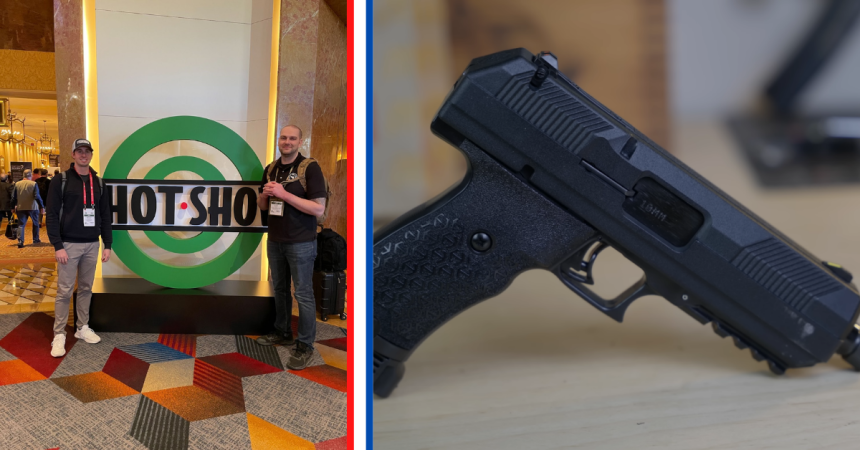Artillery fires are the kind of big, thundering fireworks shows that look awesome in movies. That being said, there’s always that crazy scene where Nicholas Cage (or some another action hero) runs through multiple explosions from mortars and artillery, remaining miraculously unscathed as every extra around them is cut down instantly.
So, which is real? Does artillery slaughter indiscriminately or can you get lucky and walk through a storm unscathed?

Marines carry rounds for an M777 howitzer during an exercise in Australia on August 8, 2018.
(U.S. Marine Corps photo by Staff Sgt. Daniel Wetzel)
Well, the actual story is much more complicated. It is possible, even on flat, featureless ground, to survive an artillery strike with little visible injury. But it’s nearly just as possible that you’ll be killed even with an inch of steel between you and the blast when one goes off.
It actually all comes down to fairly basic physics, and the British did extensive research during World War II to figure out how this plays out on the battlefield.
There are three ways that artillery most often claims its victims. The most common is through fragmentation of the shell, when the metal casing is split into many smaller bits and hurled at high speed in all directions. The next most common cause of death and injury is the blast wave; the sudden increase in pressure can damage soft tissue and shatter buildings and vehicles if the round is close enough.

A white phosphorous round busts far over the earth as artillerymen create a screen during an exercise at Fort Stewart, Georgia, on May 22, 2016.
(U.S. Army photo by Spc. Scott Linblom)
The least common cause of death and injury is the heat wave, where the sudden increase in temperature causes burns on flesh or starts fires.
Whether a given soldier will survive or not is basically a question of whether they are seriously affected by one or more of these lethal effects. So, let’s look at them one by one.
First, the fragmentation, also commonly known as shrapnel. Most artillery rounds are designed to create some kind of shrapnel when they explode. Shrapnel works kind of like a bullet. It’s a piece of metal flying at high speed through the air, hopefully catching an enemy soldier along its path.

An M109 Paladin fires a 155mm high-explosive round during a combined armslive fires exercise on September 9, 2018.
(U.S. Army photo by Staff Sgt. Matthew Keeler)
When it hits flesh, the shrapnel shreds the tissue it passes through, just like a bullet. But, also like a bullet, the biggest factor in lethality is the amount of energy imparted by the munition into the flesh.
Basically, physics tells us that no energy or mass is created or destroyed except in nuclear reactions. So, a piece of metal flying at high speeds has a lot of energy that is imparted to the flesh it passes through, causing cell death and destroying tissue in a larger area than just what the piece of metal actually touches. According to the British estimates, approximately 43 percent of the front of a human (or 36 percent of a human’s surface area in total) accounts for areas in which shrapnel is likely to cause a lethal wound.
So, if a piece of shrapnel hits any of those spots, it will likely cause cell death and then human death. But, shrapnel dispersion is its own, odd beast. When an artillery shell goes off, it’s easy to imagine that the shrapnel explodes in 360 degrees, creating a sphere of destruction.

Lance Cpl. Miguel Rios, field artillery cannoneer with Mike Battery, 3rd Battalion, 11 Marine Regiment, 1st Marine Division, arms 155mm rounds for an M777 Howitzer in preparation to fire during training Aug. 9, 2018, at Mount Bundey, Northern Territory, Australia.
(U.S. Marines Corps photo by Staff Sgt. Daniel Wetzel)
But shrapnel still carries a lot of momentum from its flight. As the round explodes, the force of the explosion propels the shrapnel out, but the metal fragments still carry a lot of the momentum from when they were crashing down towards the earth.
So, if the artillery round was flying straight down, the shrapnel would hit in a near-perfect circle, as if a giant had fired directly downwards with a shotgun. But the rounds are always flying at some sort of angle, sometimes quite shallow, meaning they’re still flying across the ground as much as falling towards it.
In that case, the shrapnel takes on a “butterfly wing” pattern, where a little shrapnel lands behind the round and a little shrapnel lands ahead of the round, but the vast majority lands on the left and the right.

A howitzer crew with 2nd Battalion, 12th Field Artillery Regiment, Alpha Battery, 2nd Platoon fires artillery in Afghanistan in support of Operation Freedom Sentinel, July 23 2018.
(U.S. Army photo by Sgt. Elliot Hughes)
The momentum of the round and the force of the explosion combine to form what’s referred to as a “butterfly wings” pattern where shrapnel is flying at high speed as it hits people and the ground. But, in a likely surprise to most people, even this most lethal area typically only injures or kills just over half the time..
That’s right, even if you’re standing under an artillery round as it goes off, you still have a chance of surviving (but we still don’t recommend it).
But what if you have a nice thick steel plate or concrete wall protecting you? Well, that’ll protect you from most of the effects of shrapnel, but an artillery round that detonates closely enough to your concrete or steel will kill you a different way: the blast wave.

An artillery crewman from Alpha Battery, 2nd Battalion, 114th Field Artillery Regiment, 155th Armored Brigade Combat Team, Task Force Spartan, uses a tool to secure the fuse to the 155mm round during a combined arms live fire exercise on September 11, 2018.
(U.S. Army photo by Staff Sgt. Matthew Keeler)
See, the explosion at the heart of the an artillery round creates lots of shrapnel because of the sudden expansion of air as the explosive is consumed. But, the blast wave keeps going and can break apart other things, like the concrete or steel protecting you, or even your own body. After all, a blast wave that hits you hard enough will crush your skull much more easily than steel.
The blast wave is most effective at extremely close ranges, measured in feet or inches, not yards. This is what is likely to kill a tank or destroy a bunker, both of which typically require a direct hit or multiple direct hits.
The final lethal effect, the heat wave, is most effective at short ranges and against flammable materials. Think thin-skinned vehicles filled with gas or the flesh of your enemies.
So, if nearly all artillery shells kill you with the same three mechanics, why are there so many types and why are artillerymen so into things like fuses and powder?
Well, remember that quick note about “angles” when it came to shrapnel patterns? Different targets are susceptible to different artillery effects. And changing out fuses and changing the gun’s angle and number of powder bags allows an artilleryman to change how the round flies and where it explodes.

Troopers from the Field Artillery Support Squadron “Steel,” 3d Cavalry Regiment “Brave Rifles,” support Iraqi army operations with artillery fires from their M777A2 Howitzers, Aug. 12, 2018
(U.s. Army photo by 2nd Lt. Jamie Douglas)
For vehicles, especially armored ones, the best way to kill them is to get the explosive to happen as close to the vehicle as possible, preferably while the round is touching the target. That requires an impact fuse that cases a detonation when the round reaches the target or the ground.
But, if you want to cut down hordes of infantry or shred tents and wooden buildings, you want to maximize lethal shrapnel dispersion. The British studied the problem and recommended the rounds go off at 30 feet above the surface. This was traditionally accomplished with timed rounds; the fire direction center did all the math to figure out how long it would take the round to fly and then set the times for when the rounds was near 30 feet off the ground.
But the fuses were imperfect and the math was tricky, so the U.S. eventually figured out proximity fuses, which detonated a set distance from an object or surface.
So, how do poor Joe and Josephine Snuffy try to survive the steel rain? Well, by minimizing their susceptibility to the three effects.
Even just laying down in the dirt reduces the chances that you’ll catch lethal shrapnel — face down is best. That’ll cut your chances of death or major injury down by over 60 percent. Firing from trenches or fox holes can take your chances down to under 5 percent, and lying or crouching in those same trenches or foxholes can get you into the 2-percent range.
Dig some tunnels into the mountain, and you’ll be nearly impossible to kill. That’s why so many troops were able to survive on Japanese islands despite hours or days of bombardment.
If you’re stuck on the move, opt for cover and concealment. Walking or driving through the trees can drastically increase your chances of survival since most shrapnel can make it through one inch of wood or less — but watch out for falling limbs. The blast waves and shrapnel damage can knock massive branches off of trees and drop them onto troops.
If you’re in a vehicle, reduce the amount of flammables on the outside.
This is actually why artillerymen try to hit with as many rounds as possible in the first blast, using methods like “time on target” to get all of their first wave of rounds to land at the same moment. This maximizes the amount of destruction done before the targets can rush for cover or hop into trenches.
So, you know, heads on a swivel, and all that.




